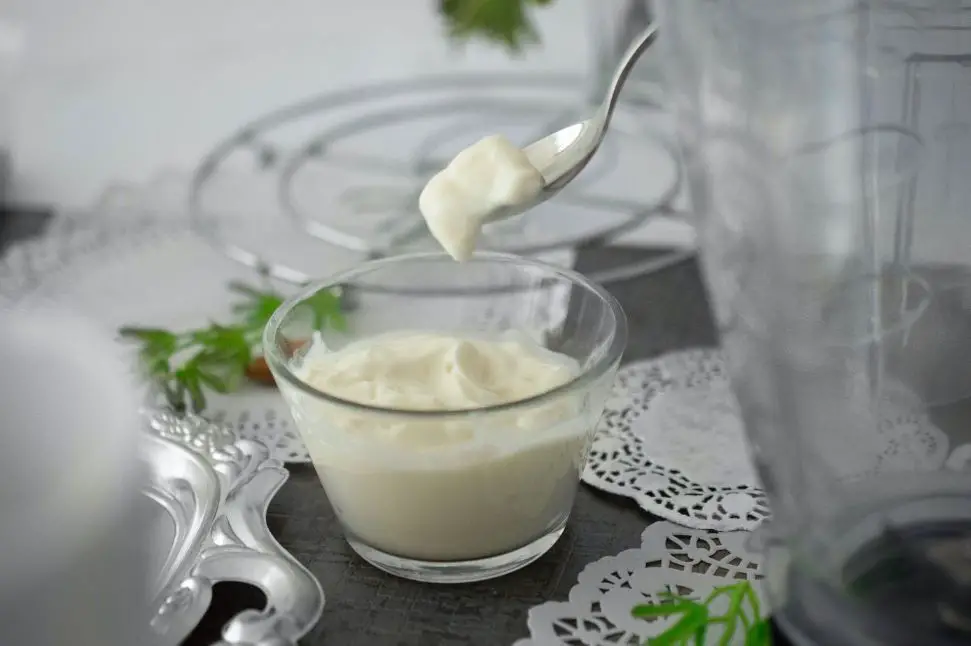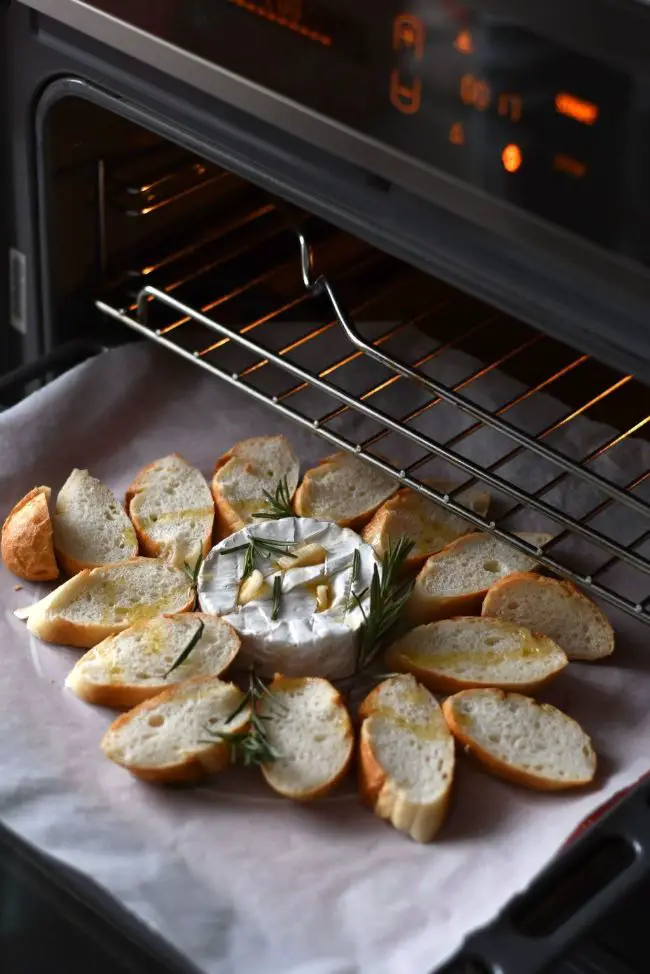Banana bread is a beloved treat enjoyed by many, but there’s nothing more disappointing than slicing it into a loaf only to find a hard crust.
If you’ve ever wondered why your banana bread crust turns out hard and undesirable, we’ve got you covered.
In this article, we’ll explore the 5 common factors that contribute to a hard crust and provide 7 helpful tips that will help you to prevent a hard banana bread crust in the future.
So let’s get started!
Why Is My Banana Bread Crust Hard – Revealed
There could be several reasons why your banana bread crust is turning out hard. Here are 5 possible factors to consider:
1. Overbaking
One common cause of a hard crust on banana bread is overbaking.
When the bread is left in the oven for an extended period, the exterior can become excessively dry and develop a tough crust.
To avoid this issue, it is recommended to reduce the baking time.
This adjustment allows for a shorter period in the oven, minimizing the chances of the crust becoming overly hard.
2. Incorrect Oven Temperature
Another factor that can contribute to a hard crust is using an oven with the wrong temperature setting.
If the oven is too hot, it can result in uneven baking and the formation of a hard crust on the outside.
To fix this problem, it is crucial to verify that your oven is calibrated correctly and set to the recommended temperature specified in the recipe.
You can consult the oven’s user manual or contact the manufacturer for instructions on how to calibrate your particular oven model.
Additionally, using an oven thermometer can provide an accurate measurement of the actual temperature inside the oven.
This allows you to adjust the temperature setting accordingly and ensure that the banana bread bakes evenly, with a properly textured crust.
3. Insufficient Moisture
Moisture content is a key factor that affects the texture of the crust in banana bread. If the batter lacks sufficient moisture, it can lead to a harder crust.
To ensure a moist and tender texture, it is important to use ripe and moist bananas in your recipe.
Ripe bananas are softer and contain more moisture, which will contribute to a better texture in the final product.
Additionally, it is crucial to accurately follow the recipe to ensure the proper balance of ingredients.
4. Lack of Fat or Oil
Fat or oil is another essential component in banana bread recipes that contributes to the moistness and tenderness of the bread.

Whether the recipe calls for butter, oil, or another type of fat, it is crucial to use the correct amount specified.
Insufficient fat can lead to a drier crust in banana bread.
Fat plays a vital role in retaining moisture and contributes to the overall richness of the bread.
It helps to coat the flour particles, creating a barrier against excessive gluten development, resulting in a more tender and moist crumb.
5. Improper Mixing Technique
The way the ingredients are mixed together can also affect the texture of banana bread, particularly the crust.
Overmixing the batter can lead to a hard crust and a less desirable texture.
When incorporating the dry ingredients into the wet ingredients, it is important to mix until just combined.
Overmixing can develop gluten, a protein found in wheat flour, more extensively.
This excessive gluten development can result in a denser and tougher texture in the final product.
7 Tips for Preventing a Hard Crust in Banana Bread
If you’re looking to prevent a hard crust in your banana bread and achieve a softer texture, here are 7 helpful tips you can try:
1. Adjust the Baking Time
To achieve a perfectly baked banana bread with a soft crust, it’s important to avoid over-baking.
Instead of relying solely on the recommended baking time in the recipe, start checking for doneness a few minutes earlier.
To do this, insert a toothpick or a skewer into the center of the bread. If it comes out with a few moist crumbs clinging to it, rather than being wet or gooey, then the bread is done.
This method ensures that the bread is fully baked but not excessively so, preventing a harder crust from forming.
2. Use the Right Pan
The type of pan you use can significantly impact the crust of your banana bread.
If you prefer a lighter crust, opt for a light-colored aluminum pan.
This type of pan promotes even heat distribution and helps prevent excessive browning.
On the other hand, using a darker or non-stick pan can result in a darker crust.
Therefore, selecting the right pan according to your desired crust color is crucial in achieving the perfect texture.
3. Lower the Oven Temperature
If you notice that the top of your banana bread is browning too quickly while the inside is still undercooked, adjusting the oven temperature can be a helpful solution.
By slightly reducing the oven temperature, you can slow down the browning process and prevent the formation of a hard crust.
Lowering the temperature allows the bread to bake more evenly, ensuring a moist and tender outcome.
4. Shield the Top
In some cases, you may find that the top of your banana bread is browning too rapidly while the center needs more time to bake.
To fix this issue, you can use a simple technique called “shielding”.
Loosely cover the top of the bread with a sheet of aluminum foil, which acts as a barrier to prevent further browning.
This method allows the center of the bread to continue baking while protecting the crust from becoming overly dark or hard.
5. Add Moisture
To combat a dry and hard crust, incorporating additional moisture into the banana bread batter can be beneficial.
There are various ways to achieve this.
One option is to add an extra mashed banana, which not only enhances the banana flavor but also adds moisture.

Alternatively, you can include a tablespoon or two of yogurt or a splash of milk in the batter.
These additions contribute moisture and help maintain a tender texture, preventing the crust from becoming tough.
6. Grease the Pan Properly
Ensuring that the baking pan is adequately greased is essential for the easy removal of the banana bread and can help prevent the crust from becoming excessively hard.
Thoroughly coat the inside of the pan, including the sides, with a layer of fat such as butter or cooking spray.
This lubrication creates a barrier between the batter and the pan, allowing the bread to release easily after baking.
Easy release reduces the chances of the crust sticking to the pan and becoming overly firm.
7. Allow Proper Cooling
Once the banana bread is out of the oven, it’s crucial to follow proper cooling procedures to achieve an ideal texture and prevent the formation of a hard crust.

Allow the bread to cool in the pan for approximately 10-15 minutes.
During this time, the bread continues to set and firm up, ensuring that it retains its structure.
Afterward, transfer the bread to a wire rack to cool completely.
Cooling on the rack allows for proper air circulation, preventing moisture accumulation and maintaining a moist and tender crust.
Why Is My Banana Bread Crust Hard – Conclusion
In conclusion, a hard crust on banana bread can be avoided by considering a few key factors.
Overbaking and using an incorrect oven temperature are common culprits that result in a tough crust.
Including the right amount of fat or oil contributes to a moist and tender texture.
Improper mixing techniques, such as overmixing, can lead to a hard crust.
To prevent a hard crust, adjusting the baking time, using the right pan, lowering the oven temperature, and shielding the top with aluminum foil can be effective.
Adding extra moisture, properly greasing the pan, and allowing proper cooling are additional tips to achieve a softer crust.
By following these helpful tips, you can enjoy perfectly baked banana bread with a soft and delicious crust.

